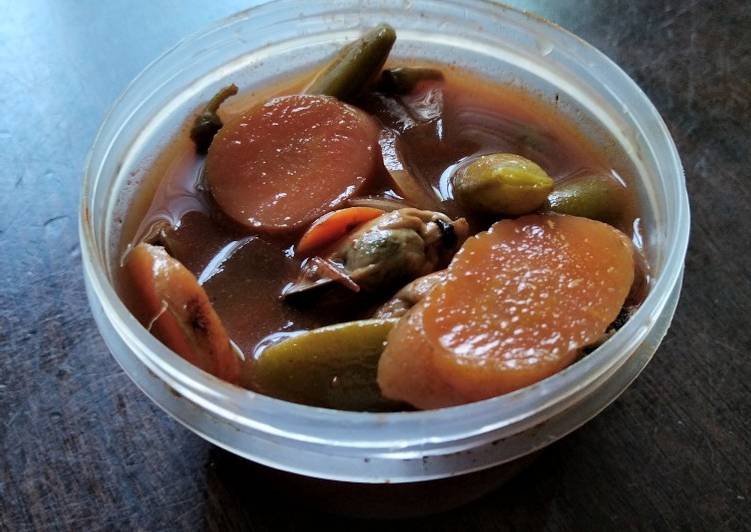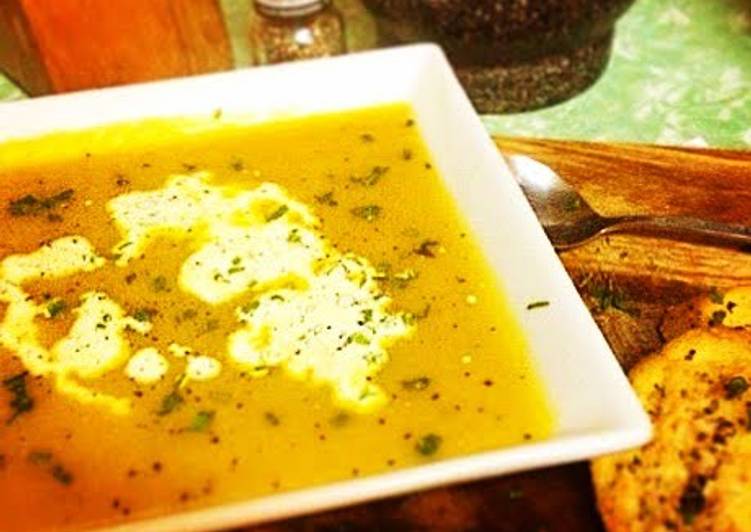
Hey everyone, I hope you are having an incredible day today. Today, I will show you a way to make a distinctive dish, not jjampong (korean inspired no-noodles mussel soup). It is one of my favorites food recipes. This time, I’m gonna make it a little bit unique. This is gonna smell and look delicious.
Not jjampong (Korean inspired no-noodles mussel soup) is one of the most favored of recent trending meals on earth. It’s easy, it is quick, it tastes yummy. It is enjoyed by millions every day. Not jjampong (Korean inspired no-noodles mussel soup) is something which I’ve loved my whole life. They are nice and they look fantastic.
Great recipe for Not jjampong (Korean inspired no-noodles mussel soup). Planned to make my mother's sour soup for #mycookbook but I kinda craved for jjampong. I had some mussels but I still have carbohydrates (hence the original sour sop plan) and not a lot of other ingredients, so this is not.
To begin with this recipe, we must first prepare a few ingredients. You can have not jjampong (korean inspired no-noodles mussel soup) using 10 ingredients and 7 steps. Here is how you can achieve it.
The ingredients needed to make Not jjampong (Korean inspired no-noodles mussel soup):
- Take 500 g mussels (or mixed seafood, Korean recipes use cockles)
- Get 3 carrots, sliced
- Prepare 600 g snap peas (or vegetables, preferably bok choy/cabbages)
- Make ready Half large onion (Korean recipes usually use spring onions)
- Get 2 tbsp gochujang (/ chili powder but will taste different)
- Prepare 2 tbsp doenjang (skip if you don't have)
- Get 2 tbsp soy sauce (increase if no doenjang)
- Take 4 dried kelp (or 1 fish/vegetable stock cube)
- Take 2 tbsp sugar/honey (Korean recipes usually call for corn syrup)
- Take 900 ml water
Jjamppong is a spicy Korean noodle soup with seafood in a spicy broth. It's a Korean-Chinese dish with its origin in China. Called 炒码面 (chaomamian) in Chinese, this dish originated from Hunan and traditionally made with a white color bone broth. The Chinese restaurants in Korea started to adapt the dish to Korean flavors by adding Korean chili powder (Gochugaru) and chili.
Instructions to make Not jjampong (Korean inspired no-noodles mussel soup):
- Quite easy actually, start by boiling water. Add the kelp or the stock cube. If you have dried anchovies, it's much better for the broth.
- Add the minced onions, Korean recipes usually call for spring onions alongside onions.
- Add the gochujang and doenjang.
- Add the mussels (or mixed seafood, usually octopus, cockles, prawns, squid), sliced carrots, and greens (I use snap peas) here.
- Add soy sauce. Taste, add sugar if you like it sweeter (Korean recipes usually call for corn syrup), add chili powder if you want it spicier.
- Wait until the soup boils and carrots are soft in medium heat, or for deeper taste, in low heat.
- Enjoy with rice, or if you want something closer to jjampong, add cooked noodles into the broth straight before serving.
Jjamppong (also spelled jjambbong) is a spicy noodle soup, and it's one of the two most popular Korean-Chinese dishes alongside jajangmyeon (짜장면, noodles in a black bean sauce). The Korean spicy noodle soup dish of Jjamppong 짬뽕 seems to be gaining popularity in Singapore. Served in a spicy seafood or pork broth usually flavoured with gochutgaru chilli powder, you would typically find Jjamppong in Korean-Chinese restaurants. In a pan, add oil, garlic, ginger, onion, chili flakes, stir it and add the seafood before the chili starts to burn. Your spicy seafood mix is ready to be served with the soup base.
So that is going to wrap this up with this exceptional food not jjampong (korean inspired no-noodles mussel soup) recipe. Thank you very much for reading. I’m confident you can make this at home. There is gonna be interesting food at home recipes coming up. Remember to bookmark this page on your browser, and share it to your loved ones, friends and colleague. Thank you for reading. Go on get cooking!

